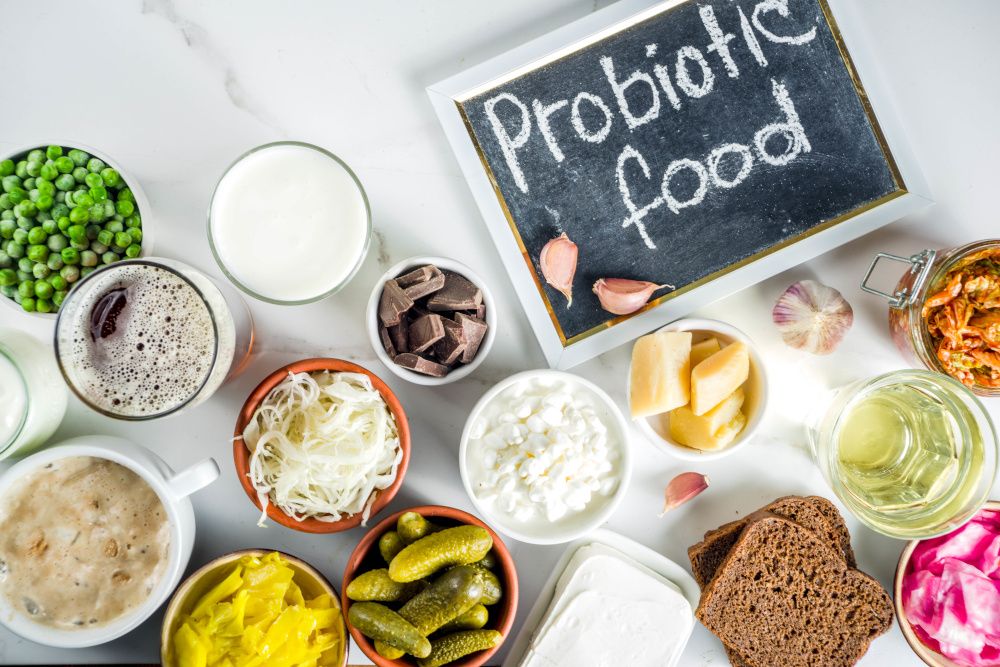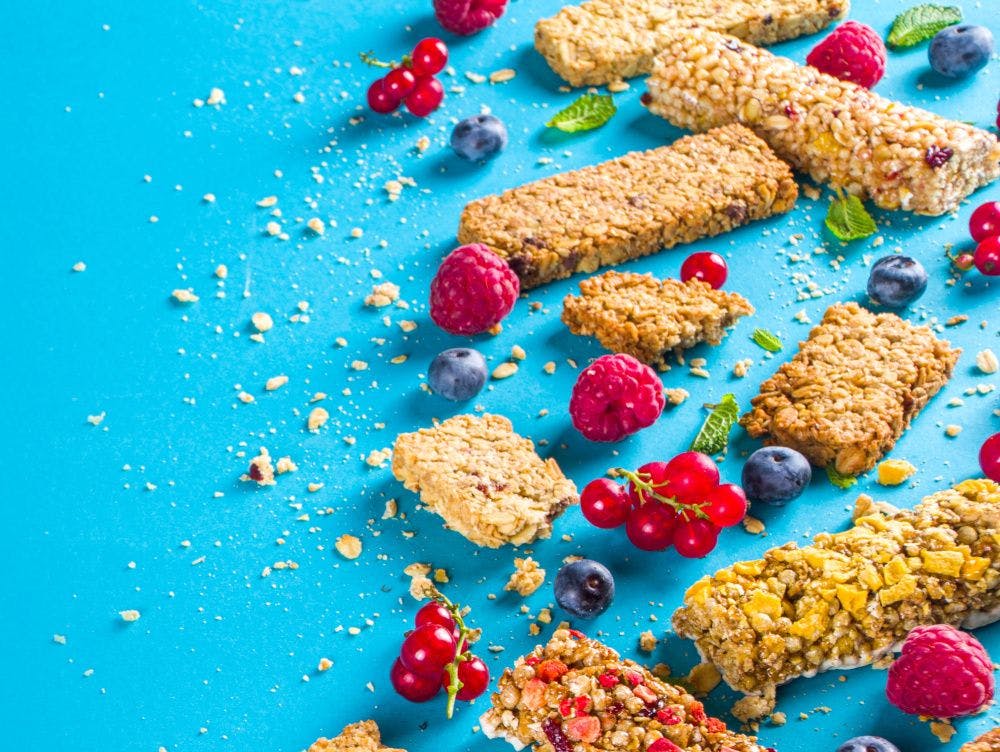Consumers embrace probiotic and prebiotic foods and beverages
More consumers are seeking good-gut food and drinks rather than gulping them down in dietary supplements.
Photo © AdobeStock.com/ricka_kinamoto

When Danone added two SKUs to its popular Dannon Activia Probiotic Dailies line in early 2019, the refreshing lemon-ginger and honey-ginger flavors weren’t all that was notable about the introductions; these latest additions to the yogurt-shot line also featured fortification with prebiotic fibers—vindication not only of synbiotics’ rising reputation but of actual foods and beverages as viable platforms for them.
And while the move was a logical step for the company and brand that helped put probiotics—and their relationship to gut health—on consumers’ maps, it also reflects a progressive leaning among consumers toward sipping and snacking on their good-gut formulations rather than gulping them down in one supplement-driven go.
And who can blame them? As Joana Maricato, market research manager, New Nutrition Business (London), says, “Ultimately, most consumers want to enjoy what they eat and drink while knowing that it’s naturally good for them. They love naturally functional products, and for most, consuming a food or drink is a more appealing experience than swallowing a pill.”
Shining a Spotlight
Probiotics and prebiotics alike have been riding a wave of good times. But, Maricato points out, “There’s definitely been an increase in awareness and acceptance of probiotics and of their importance to overall health as science on the gut-brain axis and how a healthy gut affects the body has evolved.”
The COVID-19 pandemic only focused attention on probiotics’ benefits even further, with major brands like Yakult reminding worried consumers that their products’ key actives play a crucial role in supporting immune health, she notes.
And despite the fact that no more steadfast a probiotic and prebiotic supporter than the International Scientific Association for Probiotics and Prebiotics itself emphasizes that neither ingredient has demonstrated a capacity to prevent or treat COVID-19 or inhibit the growth of the SARS-CoV-2 virus that causes it, some human trials do indicate that probiotics, prebiotics, and even synbiotics may ameliorate upper respiratory tract infections in select populations.
Natural Functionality
At any rate, the train shuttling probiotics and prebiotics toward mainstream success left the station long before the pandemic hit. And the ingredients’ already substantial momentum, Maricato says, “has motivated consumers to look for more everyday products that naturally offer digestive and health benefits—hence the growth in foods and drinks.”
Len Monheit, executive director, Global Prebiotic Association (Spring, TX), agrees, noting that he’s seen movement over time “away from traditional pill forms and into new delivery formats,” he says. “The last few years have seen a raft of launches that allow the use of probiotics and prebiotics in new and interesting applications, letting manufacturers be more playful with ingredients to develop new products that fit consumer demands,” including powders, snacks, and beverages.
In particular, “We’ve seen the propagation of the term prebiotic on the labels of snack foods and non- as well as lightly carbonated beverages,” he adds. A Nutrition Business Journal review even found that at 2019’s Natural Products Expo West trade show, prebiotics made more appearances in snack, energy, and granola bars, collectively, than in any other application category—although Monheit notes that the review listed the next two busiest categories as specialty formulas and digestive and fiber supplements.
Nevertheless, the concept of delivering prebiotics via foods “is a natural fit,” he concludes, because “many prebiotic sources are foods.”
It’s Only Logical
Maricato also sees value in delivering nutrients via a platform that makes sense to consumers. And speaking to probiotics, she says, “What’s important to remember is that what consumers want most are foods and drinks that fit logically with the ingredient.”
That may explain why consumers for years have accepted probiotics in products that seem “a logical fit for ‘friendly bacteria,’” like yogurt (she even credits this logic for “the massive success of the Activia brand”) and, increasingly, fermented drinks.
Indeed, Mintel’s April 2020 Functional Drinks report1 notes that interest in probiotic beverages parallels their strengthening association with digestive health, not to mention consumers’ increasing awareness of the importance of having a healthy gut.
“This is evidenced by the increased mainstream popularity of kombucha as well as the growing familiarity with and curiosity about other fermented drinks like kefir and jun,” the report notes. “Probiotics are showing up in other segments as well, from water and juice to sparkling tonics.”
Food-Friendly
Certainly, this expansion wouldn’t have happened absent the development of sophisticated probiotic and prebiotic ingredients that can tolerate the processing, storage, and shelf-life conditions common to most foods and beverages—to say nothing of ingredient interactions that might occur in the formulation.
In the case of probiotics, hardy spore-forming strains, as well as freeze-drying, encapsulation, and creative packaging, have all revolutionized the spread of good gut bugs beyond refrigerated dairy into candy, drink mixes, and more.
As for prebiotics, the higher doses required of earlier options—5 g or more for an effective inulin dose—actually rendered supplements almost impractical. But, Monheit points out, today’s more advanced ingredients allow for smaller doses still, making prebiotics “even more versatile,” he says.
Another prebiotic advantage in food and drink systems is fiber’s relative stability and ease of formulation, Monheit continues. Some prebiotics even exhibit a noticeable degree of sweetness, adding yet another layer of in-application functionality, and motivating some formulators to use prebiotics to partially replace sugar.
Another “new movement” for prebiotics, according to Monheit: the inclusion of several different ones in a single snack or beverage. He expects to see more products featuring prebiotics from “different families”—perhaps an inulin source, different oligosaccharides, resistant starch, maybe even polyphenols for an antioxidant kick—tailored to offer a suite of “clean-label, food-based” functional benefits. “With the evolution of microbiome technologies and a more thorough understanding of how prebiotics work,” he says, “these new options are showing promise. And it’s exciting.”
Of course, supplement delivery isn’t going the way of the dodo yet. As Maricato says, “For consumers highly motivated by health reasons—like people with severe digestive problems—a supplement still offers an easier way to get high doses of ingredients that would otherwise be difficult to obtain through food or drink alone.”
But as we learn more about the microbiome, the probiotics inhabiting it, the prebiotics that feed it, and the benefits it confers beyond mere gut health, Maricato predicts that the discoveries we make will “fuel even more attention to this area and to future product innovation.”
Reference
- Mintel report. “Functional Drinks – US – April 2020.” Published online April 2020. Accessed at: https://store.mintel.com/functional-drinks-us-april-2020


























